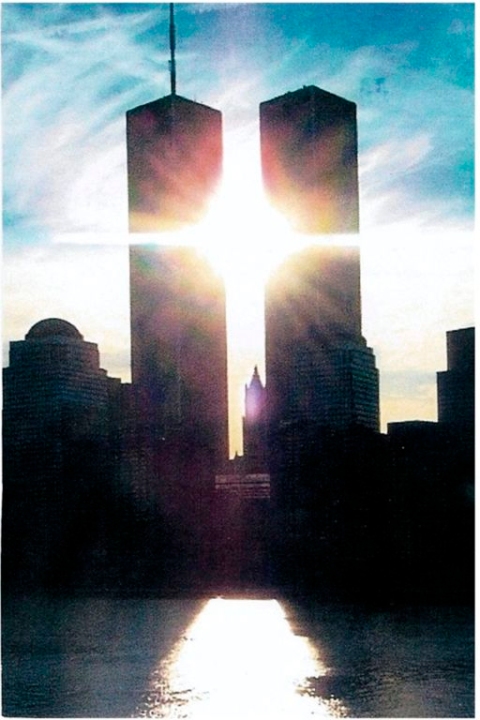Archive for the ‘cities’ Category
On the trail of Egon Schiele
I first heard of the Austrian artist Egon Schiele in a radio interview with David Bowie when I was at school. At university I got a travel scholarship to do some research on him in Austria. I stayed a short train ride outside of Vienna (Payerbach-Reichenau) and, beside going into the city, I travelled out to Neulengbach (under an hour from the city centre) to where Schiele lived and had his studio at one of the most productive times of his life. When I went there that time (1984) there was no sign of Schiele in the town. When I went to ask the way to his studio I was told people didn’t talk about him.
Last summer I was working at ORF in Vienna and took the opportunity to revisit Neulengbach and various other Schiele-related places. In the intervening 33 years much has changed. Schiele has a strong presence in Neulengbach and in his nearby birthplace, Tulln, and is widely celebrated. There are posters across Vienna and galleries of various sizes.
In my eyes he’s one of the great artists of the 20th century and since this year is the centenary of his early death (at the age of just 28 from the Spanish flu epidemic in the wake of the Great War) I’m publishing this photo-post to mark the occasion. The day of his death was 31st October 1918 (his birth was 12th June, the same day as my other half).

On the trail of Schiele in Tulln, Austria

Schiele’s birthplace – upstairs in the station at Tulln

The artist whose name dare not be spoken three decades ago is now celebrated and signed

The plaque at his birthplace

The station where his father was station master (before he set fire to it in his madness)

Schiele’s school, Tulln

A presence in the streets of Tulln

The Egon Schiele Museum – Tulln. Opened on the centenary of his birth (12th June 1990).

The museum is housed in what was formerly the gaol. Schiele was imprisoned here in 1912.

Statue of Schiele outside the Egon Schiele Museum, overlooking the Danube

Schiele’s presence around Vienna – advertising the Leopold Museum

The atrium of the Leopold Museum, Vienna – opened 2001

Leopold Museum, Vienna – the world’s largest collection of Schiele’s paintings and drawings
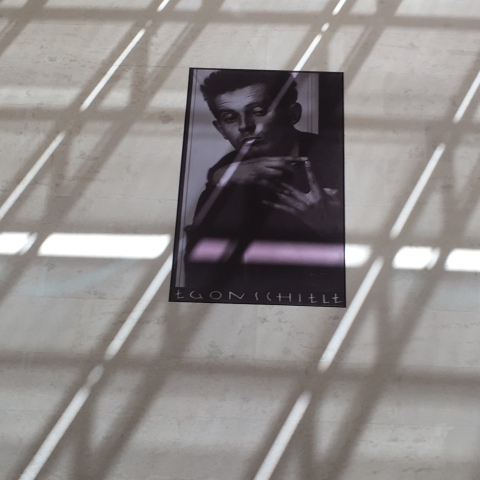


Neulengbach where Schiele lived with his girlfriend/model Wally

Bust of Schiele in the centre of Neulengbach – erected in 2016

Once invisible, he even has his own Platz now

The courthouse in Neulengbach where Schiele was confined and sentenced

The courthouse now contains a small museum

The orange on the cell bed (brought by Wally to paint and eat)

Orange on cell bed

gaol guitar door

Schiele’s cell

I had a moment in here – the whole place was empty
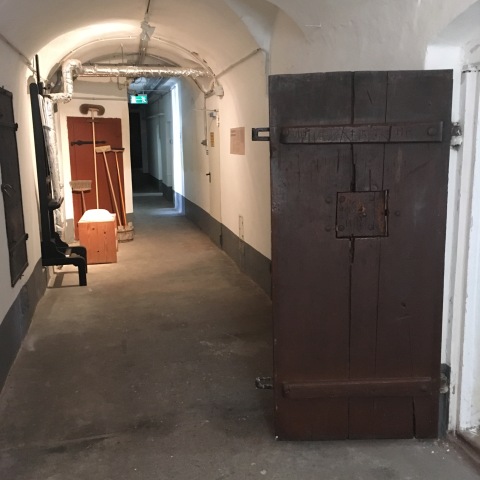

Death mask in a cell

Schiele in cell (he’s on a plastic bag)


He’s now got a Place and a Street

on the way to his studio

And Wally’s even got her own lane

Schiele’s road – Au

A neighbouring house of the same period

Site of Schiele’s house & studio – it was torn down in the 60s(?)

Schiele & Wally’s place (photographed 1963)

Schiele’s house/studio

Captured for posterity by art historian Alessandra Comini

After the cell experience, Schiele left Neulengbach

In 1912 he moved to a studio in suburban Vienna (Hietzing) at 101 Hietzinger Hauptstraße

I happened to be staying in Hietzing by chance on this visit – beschert

Schiele’s studio is on the top floor

101 Hietzinger Hauptstraße
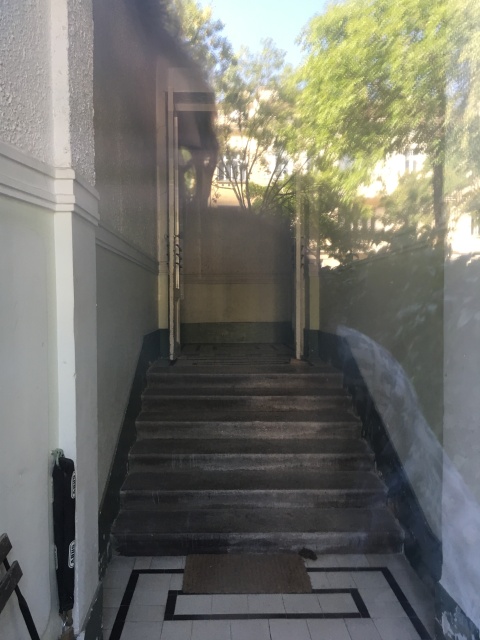

Treading in the great man’s footsteps

He spotted his future wife (Edith) in the building opposite where she lived with her parents and sister

The Harms’ apartment – 114 Hietzinger Hauptstraße, Vienna

Both Edith and Egon died in this building in 1918

Edith & Adele’s view of Egon’s place

A letter from Egon to sisters Edith and Adele Harms 1914
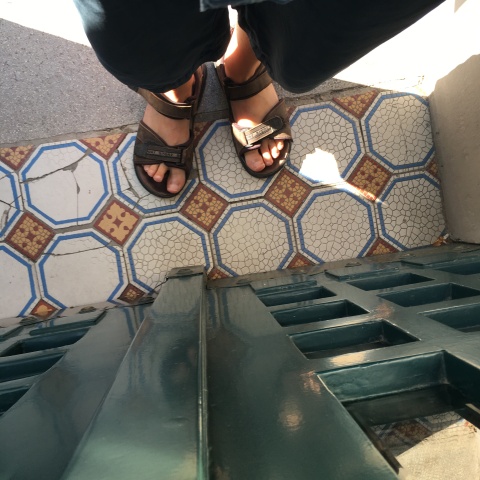

Schiele’s mentor, Gustav Klimt, is buried nearby in Hietzing Cemetery

Headstone designed by Josef Hoffmann – Cemetery Hietzing, Vienna, Group 5, Grave #194

Klimt’s The Kiss in Schloss Belvedere, Vienna

Truly magical
One world, one nightmare
[written and published elsewhere shortly after the Beijing Olympics opening ceremony; published here the day before the closing ceremony including an 8-minute hand-over slot to London 2012]
I dreamt I saw thousands of people moving in unison in circles. I dreamt they were so numerous that the incredible spectacle looked as ultimately unconvincing as CGI. I dreamt I saw children singing songs so simple (so not made up by children) they were bland and charmless – We plant trees, we sow seeds, the land turns green. The air turns brown. We wear masks. I dreamt I saw teenage girls swaying for hour after hour as country after country filed past, filming the filmers on their made in China handycams. Getting tired? Keep swaying happily girls or it’s the labour camp for you. Meanwhile back in the labour camp, some months earlier: OK, lads, here’s the choice – break rocks or learn this little dance. I dreamt I saw some other lads goose-stepping in black boots. Tanks filing past, missile launchers, fly-bys. One world, one dream. One tank, one student. Meanwhile, some miles away: 150 tanks roll into Georgia. Georgian army 11,320 – Russian army 395,000. Georgian population 4.63m – Russian population 140.7m (though due to halve by 2050). Georgian annual military expenditure $380m – Russian military expenditure $59,100m. How much did this spectacle cost? How much does China spend on education per year? I dreamt I saw no flag from Tibet. I dreamt I saw unison not unity. I dreamt I saw bird cages in a bird’s nest. People moving in small circles. I dreamt of the Mordillo cartoon I cut out as a kid. “We’re all different!” shout out the identical looking mass of people. “I’m not!” shouts out one of them. One party, one line. I dreamt I saw something which sub-consciously summarised what others fear.
In 2012 to follow these people making a spectacle of themselves, partying to the tune of the Party, London must be itself, tune in to its idiosyncratic, eccentric, spirited creativity (one thing that cannot be manufactured); its rich mix of cultures and peoples; its unique, particular, genuine handmade in Britain talent; its individual dreams which thread the tapestry of its Jerusalem spirit.
Post-script 23.08.08:
As it turned out, some of it was CGI (the footprints across the city sequence as shown on TV across the globe). The ‘lovely children’s singing’ turned out to be voiced by the little girl with crooked teeth whilst the pretty little girl provided the acceptable face. And those various ethnic groups represented by children dressed up in various ethnic costumes turned out to be not very ethnically mixed at all. So after two weeks of great sport, it still looks like a bit of authenticity, eccentricity, diversity and deep-down creativity should go a long way.
Post-script 26.8.08:
Went to Trafalgar Square on Sunday to watch the Olympics hand-over communally. Within the 8 minute British 2012 intro perhaps the most interesting moment was when David Beckham kicked the football into the serried ranks of the Chinese performers (seemingly not where it was planned to go – how very England FC of him). For just a moment the fine-tuned order was disrupted as a lone individual nabbed the ball and showed a brief glimpse of genuine delight.
Human Bonds
So I’m on the underground yesterday, reading the new hardback I’d bought the day before. Then this burn-out walks on and I have that feeling – I know he’s going to sit next to me. He’s very tall, lanky, drug thin. His fingernails are dirty. The driver has to warn passengers to stay clear of the closing doors. The burn-out calls them “fucking idiots” in the expected loud cockney voice. I shift rightwards in my seat, hope he isn’t going to smell too bad (which he doesn’t as far as my hopeless sense of smell can tell), carry on reading.
“Is that the new Bond novel?” he asks me gently, having glanced down at the page I was on. The book only came out the day before. The open page had few clues as to what it was.
“Yes, it is.”
“Do you think the film they’re making of it will be good?”
“I think it’s based on a different story.”
“So is that written by Fleming?”
What do I take from the unexpected exchange? You can’t judge the book by the cover I guess is the obvious one we (certainly I) can’t be reminded of often enough. You can tell the price (but not the value). What I most took away was the Simple Pleasure that I had enjoyed the conversation and contact and there was real warmth in those human bonds.
The new Bond book is entitled ‘Devil May Care’ and has been written by Sebastian Faulks (of ‘Birdsong’ fame) in the style of Fleming. I’ve only ever read a couple of Bond books, but remember really enjoying ‘Casino Royale’ (the first Bond novel) for the surprising brutality of the man I had only encountered through the movies. The publication of a new Bond book felt like a bit of an event (I was one when Fleming died) so I bought a copy of this in advance on-line through Hatchards website and picked it up on the day of publication on the way to a meeting at BAFTA with Rob Bevan of XPT- we were working on the forthcoming website for 4IP, the new Channel 4-led fund for public service interactive media, announced at Next on 4 back in March and coming on-stream over the summer. Hatchards in Piccadilly – a book shop dating back to 1797 as it says on its rich green bags the colour of Bond’s customised Bentley with its Arnott supercharger – is one of London’s great treasures. It makes me feel guilty every time I buy from Amazon and I try to make amends by pulling by whenever I’m at the Academy at 195 Piccadilly and picking up a signed volume.
After having a satisfying creative session with Rob, my old collaborator from MindGym, I hooked up with Ivo Gormley of ThinkPublic to talk about his forthcoming documentary about the internet and democracy. We walked back Channel4wards through St James’s and St James’s’ Park where I had the pleasure of demoing Big Art Mob in its mobile incarnation [WAP site] to him in a small alley where we found a superb bas relief of Anthony and Cleopatra, which looks like it may once have adorned a theatre in the area but is now built into a wall opposite an old public house, and on a remixed sculpture which seems to have once lost its head in the park. Ivo’s dad, Antony, who he closely resembles, is one of the most popular artists on Big Art Mob, third only to Henry Moore and Banksy. I wonder what the ‘burn-out’ thinks about public art? what his favourites around the city are? Something to talk about next time…
Too Long in Exile
I’m sitting here in the James Joyce Foundation in Zurich with in front of me a copy of ‘Thom’s Official Directory of the United Kingdom of Great Britain and Ireland for the year 1904’ published in Dublin by Thom & Co. (Limited) of Middle Abbey-Street. 1904 is the year in which Joyce’s Ulysses is set. This big red volume is the reference book Joyce used to recreate the detail of Dublin from exile here in Zurich. Joyce came to the city on leaving Dublin in 1904 (hence the choice of date for the novel – it is Dublin as fixed at the point of exile) accompanied by his other half, Nora Barnacle. They moved on to Italy/Trieste, back to Zurich, and on to Paris. Much of Ulysses (1922) was written here in Zurich. Joyce left occupied France in 1940 for Zurich where he died in 1941 (aged 59) and is buried.
So I’m flying in this morning with my iPod Shuffle on and up pops Van the Man singing ‘Too Long in Exile‘ with the line “just like James Joyce, baby / Too long in exile” – one of those meant to be moments.
And on the subject of Abbey Street and occupied France, in my hands is a copy of a classy thriller ‘The 6th Lamentation‘ by William Brodrick whose two central characters are a monk and a victim of the occupation of Paris. Another key character is a refugee to Switzerland. So I’m psyched for the Stiftung James Joyce.
I’m welcolmed by a friendly American academic and by the Director and prime mover of the Foundation, Fritz Senn, a Joyce specialist and as near as a Swiss man can be to being Irish.
In the back of Thom’s is an advert for Uska-Slan – Water of Health – in the form of Cantrell & Cochrane’s Table Waters. Just the kind of ad Leopold Bloom would have dealt in. I’m fresh from a lunchtime conversation which included the benefits of Badoit and the insanity of bottled still water. There’s a wonderful passage in Ulysses about water I heard declaimed atop the martello tower in Sandycove, South Dublin on the centenary Bloom’s Day on 16th June 2004.
I can, for example, look up my sister-in-law’s street in Ballybough (PoorTown) and see exactly who lived there in 1904. Mrs Grace at No. 24. A draper at No. 1, a jeweller at No. 14 and Mr John Killen of the GPO at No. 16. It tells you where the pillar boxes were (“Pillar Letter Box adjoining Raglan-road”). I’ve just spotted my father-in-law’s namesake (Murphy, James, esq.) at No. 26 Clyde-road which was valued at 70 pounds – and a certain William McGee at Cobourg-place (next door to Jasper Monahan the spirit grocer, which I assume is a far more colourful name for an off-licence).
My wife has now lived in London – many miles away from the cemetry at Kilbroney, Co. Louth where James Murphy after James Murphy is buried – for more years than she’s lived in Ireland – she went past the mid-point a couple of years ago, very significant really.
When I was in Ireland for the summer holidays last year, staying at said sister-in-law in Ballybough, I picked up a copy (at the Irish Museum of Modern Art in Kilmainham) of ‘That Neutral Island‘ by Clair Wills about the Irish home front in the Second World War. I often wonder what similarities and differences there are between the Irish neutrality and the Swiss. Joyce spent most of the First World War (July 1915 to October 1919) in Zurich, as well as getting the permit for entry from occupied France in late 1940.
A few weeks ago there was a big art robbery just outside Zurich from another Foundation – the Emil Buhrle Foundation. Buhrle was a Zurich-based, German born industrialist who sold arms to the Third Reich. After the war 13 paintings in the collection, which was raided in February by armed masked men, appeared on a list of art looted by Nazis from Jews and eventually he handed them over, getting some compensation from the Swiss government. The provenance of other works in the collection remains shady. Much like the Russian collection currently on show in the Royal Academy, London (in the From Russia exhibition), where the British government had to provide an official ‘safe passage’ document to insulate the dubious pieces from any chance of investigation and return to their rightful owners – Russia’s art galleries are peppered with works ‘nationalised’ after the Revolution or looted in the Second World War, many ultimately from murdered Jews. So one has limited sympathy for the Emil Buhrle Foundation as whose work the masked raiders with the Slavic accents actually stole is a moot point.
I recently came across this quotation by the writer and Nobel Peace Prize winner (and man behind another foundation, this one a Foundation for Humanity, which bears his name) Elie Wiesel (through A.Word.A.Day – a daily email with an interesting new word – might have been Joyce’s cup of tea [my philisophical Zurchner taxi driver earlier today was tickled pink by this British idiom]):
“Neutrality helps the oppressor, never the victim. Silence encourages the tormentor, never the tormented.”
And this popular one attributed to Edmund Burke also comes to mind from the Last Message SMS competition on Lost Generation:
“It is necessary only for the good man to do nothing for evil to triumph.”
Reckon I’ll give the last word to Van the Man (not to be confused with White Van Man – the Buhrle robbery was carried out in a white panel van) and his collaborator on ‘Song of Being a Child‘, Peter Handke (not Swiss but Austrian like Adolf Hitler and Simon Wiesenthal, born in 1942, also a collaborator with Wim Wenders [Wings of Desire], a writer who has lived in self-imposed exile in Berlin, the US and for the last two decades Paris):
When the child was a child
It was the time of the following questions
Why am I me and why not you
Why am I here and why not there
Why did time begin and where does space end
Isn’t what I see and hear and smell
Just the appearance of the world in front of the world
Isn’t life under the sun just a dream
Does evil actually exist in people
Who really are evil
Why can’t it be that I who am
Wasn’t before I was
And that sometime I, the I, I am
No longer will be the I, I am
A little more magic from the Hiberno-Germanic melting pot.
Warum bin ich ich und warum nicht du?
Warum bin ich hier und warum nicht dort?
The C Word
Walking into work the other day I was delighted to be confronted by a proper demo. Not just a common or garden demo but a demo by a full-on, fully paid up Cult. The Moonies were outraged by Channel 4’s indelicate portrayal of their romantic mass wedding in My Big Fat Moonie Wedding. I stopped for a minute to talk to a boy who said he was 16 but looked less and asked him why he wasn’t in school – apparently he was on study leave. Yeah, chin Jimmy Hill chin – some people will believe anything …and others won’t. So I trotted up stairs and my colleagues in the immediate vicinity of the pile of papers formerly known as my desk were talking about the demo. Michael Palmer, business affairs man and fellow wearer of Adidas Chile 62s (fast becoming the unofficial uniform of the department), came up with a fabulous definition of religion: Religions are just cults that got lucky.
A couple of days earlier I’d gotten back from New York where I was speaking at the World Congress of Science and Factual Producers, presenting the Big Art Project to an international audience of telly-makers. I didn’t get down to Ground Zero (which I’ve never seen, haven’t been in NYC since before 9/11) but I was thinking about it and the absence on the skyline.
Just before I left for Noo Yoik, my very old friend Judyth Greenburgh was back in her native London for a few days sorting out her old pad in Camden Town. She now lives on a houseboat in Sausalito, California where we enjoyed a fabulous holiday stop-over the year before last on our way down Route 101. When Judyth worked at Saatchi & Saatchi, long, long ago before she headed West, her boss was a certain Paul Arden.
Yesterday morning I was at an engaging, lively facilitated discussion session on Blogging. It was chaired by James Cherkoff who I first encountered a couple of years ago at a New Media Knowledge conference at the Royal Society of Arts. Here is his Twitter picked up within moments of the finish by the organisation who’d employed him:
“I’ve just moderated a 4 hour session where I said four things and had to fight to get those in.”
Imagine there’s a salutory blogging lesson there somewhere.
So I’m walking out of said sesh at the Old Laundry in Marylebone and wander past the very cosy Daunt Books, can’t resist a quick pop-in and come across Paul Arden’s latest by-the-counter tome (the bookshop equivalent of supermarket check-out chocs). Since leaving Saatchi’s he’s been writing rather minimalist bookettes on Creative Thinking such as Whatever You Think Think the Opposite and It’s Not How Good You Are It’s How Good You Want to Be. When I was approached by some bizarre nascent outfit at ITV called Imagine about 18 months ago I read a couple of these to get me back into that zone (creative thinking theory) with which I hadn’t actively engaged that much since writing MindGym (with Tim Wright and Ben Miller). Arden’s latest is all about the Creator rather than creativity – God Explained in a Taxi Ride – and I was quite taken with the first page I opened it at – he suggested the best thing to put on Ground Zero was a big mosque. And I’m inclined to agree. And it really makes you think how thin on the ground Creativity is in political circles. I’ve no idea what Arden’s politics are and whether he’s of the ‘Labour isn’t Working’ era at Saatchi but you can’t help wondering how the world could be with a bit more left-field (whether left wing or not) thinking applied to the pressing problems (and opportunities) of our age…
Meta more thesis
Dale Hergistad of Schematic kindly pulled by the Channel to show us some of their recent work. He’s based in the LA office and looks like a (very nice version of a) baddie from a Hollywood movie, one of those peroxide blonde ones (can’t quite pin down which Die Hard or Lethal Weapon or whatever I’m thinking of).
The presentation kicked off with some interesting analysis of our evolving relationships with different size screens – from the personal mobile to the massive public display a couple of hundred feet away – and how this relates to the journey from viewer to user. So far so good. We moved on then to look at a range of implementations and mock-ups of next-generation navigation, mainly TV-based.
Fast forward twenty minutes and these are the notes on my page, reflecting I think something of the culture gap which still exists between the US and UK:
* the navigation’s all well and good but look at the crapola content we’re navigating through
* the interface experience is over-complex
* (with regard to some of the game-type implementations like Battlestar Galactica or whatever it was) people are fiddling while Rome burns – the world is coming apart at the seams while people fiddle with their joysticks
* pretty much every example is driven by buying and consumption
* who the fuck wants to interact with a car advert? haven’t they got better things to do?
* there’s an incredible greed not to miss anything, with screens within screens and the like.
So, nothing to do with Dale personally – he was very generous with his time and clearly enthusiastic about his work – more to do with the kind of project that was being illustrated, I left feeling uninspired and couldn’t get back to my (rather British) neck of the woods quickly enough.
I’m sitting writing this in Prague airport coming home from the Eureka Mobile Awards with Alfie Dennen of Moblog UK. Big Art Mob was one of six finalists. It was pipped at the post by some porno service which gets its average punter to part with $55 a week to interact via their mobiles with Russian girls (live on webcams) whilst playing with their joysticks or whatever. Kafka would have loved the scenario, and he might well have had a word or two to say about the kind of Amerika reflected in the bloated, greedy world implied by the kind of television/media Schematic find themselves engaging with.
As Alfie and I supped a mojito with a TV producer from Cologne last night in the backroom of a Prague cellar guarded by a smileless skinhead, a ‘TV producer’ hot from a shoot of “erotic sports”, my first experience of Prague was shaping up nicely. Alfie and I were fuelled up with dumplings and heavy meat – consumed just before in a restaurant decorated with copulating Czech cartoon couples (4 Cs copyright Alfie’s mum, Head of Stats at Young & Rubicam) – while Alfie’s long lost and newly rediscovered old flatmate Stormin’ Norman was fuelled with something altogether smaller and rounder. He was kindly leading us to the main event but unfortunately got sidetracked by the other pornographers by the exit.
So Alfie and I had to hijack a cab which pulled up beside the awards venue. It happened to be set in a bar adjacent to the Kafka Museum. A huge K stood in the courtyard beside two statues of naked men holding their joysticks and pissing at each other (I hesitated for some reason to snap it for Big Art Mob, I’m not sure whether that was more about aesthetics or light conditions). So a dark surreality was the dominant atmosphere with Das Schloss looming above us.
The Eureka Awards, run by World Telemedia, had a certain Kafkaesque quality about them, like playing a game whose rules nobody has explained, Byzantine, 1,000 Russian sex-workers voting online, bizarre voting patterns worthy of Richard & Judy, Ant & Dec, Blue & Peter, text votes too for no clear purpose, and a panel of journalists expert in joysticks and other mobile stuff. Big Art Mob, an innocent abroad, a naïve player in a dark game of intrigue.
As I walked home over the unlit Charles Bridge, past shadowy lovers and silhouetted lone men, my long black coat was just right for the Third Man atmosphere of the famous landmark and adjacent streets. The meter on the cab home whirled as if possessed – “it’s night” explained the lugubrious driver. As I crossed the hotel lobby two blondes sat by the lifts ready for the simple pleasures. Who the fuck wants to interact with a post-Communist cliche? Is everything driven by buying and consumption these days? Josef – as one letter (G) to another (K) – any advice on how to navigate our way out of this dark, consuming maze?
I headed up to my (rather British) neck of the woods. My Agatha Christie novel (4.50 from Paddington) where the only thing two ladies do is walk around Miss Marples’ garden admiring the planting. Announcement of a two-nil victory to Spurs on Sky News, a crack of light in the dark surreality of this season? (Kafka may not be a bundle of laughs but following Tottenham is only just the right side of waking up as a giant insect).
Image designed by Liv Ducci – Creative Studio – http://www.kafkamovie.com
 Comments (4)
Comments (4)





